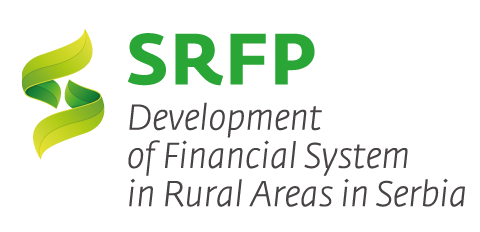Serbian MSMEs and the Challenges of COVID-19
The COVID-19 pandemic has had a global impact, leaving both mature markets and emerging economies struggling. Some of the hardest hit have been micro-, small- and medium-sized enterprises (MSMEs). This is of particular note for Serbia’s economy as MSMEs represent 99% of active business entities, generate over 30% of GDP, contribute to 40% of total exports and provide nearly 66% of employment opportunities in the country. As such, the revival of the MSME sector will be key to getting Serbia’s economy back on track in a post-COVID-19 world.

Impact so far
Based on number of registered entities[1], Serbia’s overall economic activity is made up of wholesale and retail (22.6%), processing (13.4%) other services (13.0%) and professional, scientific and technical activities (10.7%). The imposition of a general state of emergency and associated measures have brought a severe reduction in most of these activities (i.e. those not considered as essential such as food- and medical-related activities). In addition to the specific measures imposed by the government (e.g. restrictions on shops being open and the number of people allowed to be present in a shop at any one time), uncertainty around the situation has also caused consumers to cut discretionary spending, further exacerbating the situation for many businesses.
Serbian entities most reliant on imported goods for production (i.e. those engaged in trade and production-based business) have been among the hardest hit due to restrictions on the import and transportation of raw materials both within and between countries. For example, Serbian-based Fiat has ceased production of cars due to a lack of available imported materials from China. At the same time, businesses engaged in the service sector are expected to take the longest to recover as hotels, cafes and bars have been closed for nearly two months and, even after the lifting of restrictions, will likely operate in only a limited capacity for some time. In fact, the tourism sector has already been estimated to have lost EUR 300 million in revenue due to the cancellation of travel plans to Serbia. This impact on the service sector has also reverberated to their input suppliers (i.e. farmers and other food and beverage producers and suppliers).
In general terms, the COVID-19 pandemic has forced many businesses to simply wait while the virus and the measures taken against it run their courses. Unfortunately, this is extremely difficult for MSMEs as significant disruptions can cause liquidity issues. Moreover, liquidity issues in larger chains often trickle down and cause liquidity issues in smaller ones.

Given the value of MSMEs to Serbia’s economy, it is crucial to understand what support they require in this difficult economic period. To this end, the National Alliance for Local Economic Development (NALED) and Business and Finance Consulting (BFC) (as part of the Development of Financial Systems in Rural Areas in Serbia Program (SRFP II), funded by the German Development Cooperation) conducted surveys, independently of one another, in an effort to better understand the impact of COVID-19 from the perspective of MSMEs themselves. These surveys revealed a number of interesting and important facts[2]:
- 65% of MSMEs are either temperately closed or are facing a decrease in sales.
- 63% of MSMEs expect revenues to fall significantly (more than 50%), with the remaining expecting moderate (up to 20%) revenue decreases.
- The biggest challenges MSMEs face include those related to the collection of receivables, maintaining adequate liquidity, demand decreases, having adequate capital to pay employees, organizing work activities in lockdown conditions and being able to meet liability requirements.
- 80% of MSMEs are reluctant to lay off employees due to strong owner-employee relationships, instead reducing hours, shifting work to home (where possible) or keeping pre-crisis levels of employee engagement. Additionally, MSMEs that do temporarily lay off employees are still paying employees a minimum of 60% of their wages.
- In April financial institutions have decreased their credit activities with regard to MSMEs, opting to wait for a government loan guarantee scheme to start before resuming such activities at normal levels. Subsequently, in May the trend was turned over as financial institutions have unfrozen lending and started approving loans with a state guarantee.
- Nearly all MSMEs have elected to take a 90-day loan holiday to postpone their fixed outflows and preserve liquidity.
The current crisis has revealed the vulnerability of MSMEs to supply and demand shocks. Limitations on the mobilization of the labor force, the disruption of supply chains and the shortage of raw materials and finished products have all been a domino effect of the measures taken to combat the spread of COVID-19. Moreover, the sudden unanticipated drop in demand over a prolonged period implies that even business with normally-adequate cash reserves are likely face issues of liquidity shortages. If MSMEs reach a stage where they can no longer afford to retain employees, it will create a ripple effect in the broader economy as the increase in unemployment will result in a sustained demand-side shock to the economy.
Safeguarding MSMEs
Understanding the unique nature of the situation as well as that economic support measures will be vital to reestablishing the economy to normalcy, the government of Serbia has introduced a number of initiatives to support entrepreneurs and businesses, including:
- Opening up financing support for MSMEs via grants, liquidity and working capital loans from the Serbia Development Fund and a state-supported guarantee scheme for liquidity and capital loans taken from commercial financial institutions
- Tax relief measures, including deferring payroll taxes and corporate taxes
- Direct financial assistance (a one-off payment of EUR 100) to all adult citizens, which will presumably ultimately help support MSMEs in the form of increased demand
The private sector has also been active in providing Serbian MSMEs with the tools and resources they need to survive this difficult period and thrive once the threat has passed. For example, the SRFP II program developed and delivered a series of 13 free-of-charge online training sessions tailored to the unique, situational needs of Serbian MSMEs. These proved to be very popular as the sessions were viewed more than 1300 times in April 2020 alone. Moreover, the program remains committed to furthering such advisory support in the coming months by offering additional training sessions on topics related to digitization, management (including crisis management), planning and technology usage. Any interested party is welcome to sign up via email at [email protected].
Some measures have also been developed to support those who, in turn, support MSMEs. Financial institutions are encouraged to take advantage of the resources available in this COVID-19 Technical Assistance Response Package as well as attend a series of crisis response webinars tailored to financial institutions and their unique issues. Additionally, everyone can stay up-to-date on the most recent important events related to Serbia and its economy by subscribing to two informational bulletins, BFC’s Agricultural Bulletin and FinTech Bulletin.
COVID-19 Aftermath
The impact of the COVID-19 pandemic is being felt around the world, and Serbia and its MSMEs are not immune. While the short-term outlook is rather bleak for most MSMEs, it is important to note that most experts do not believe that there will be any protracted recession, especially if adequate and appropriate response measures are taken to ensure the well-being of world economies. In Serbia, this means ensuring that MSMEs are given the resources and opportunities to pull through this crisis period. In short, the outlook is good if we make it good.
[1] https://publikacije.stat.gov.rs/G2019/Xls/G201919001.xlsx
[2] These results are a combination of findings from both surveys. It is important to note that each survey targeted slightly different business segments; as such, these findings only reflect broad generalizations regarding the general economic situation Serbian MSMEs are facing.
